- Home
- Neal Stephenson
Seveneves
Seveneves Read online
Dedication
TO JAIME, MARIA, MARCO, AND JEFF
Contents
Dedication
Part One
The Age of the One Moon
The Seven Sisters
Scouts
Pioneers and Prospectors
Consolidation
Casting of Lots
Cloud Ark
Part Two
White Sky
Hard Rain
Ymir
Endurance
Cleft
Part Three
The Habitat Ring circa A+5000
Five Thousand Years Later
Epilogue
Acknowledgments
Endpaper Illustrations
About the Author
Also by Neal Stephenson
Copyright
About the Publisher
Part One
The Age of the One Moon
THE MOON BLEW UP WITHOUT WARNING AND FOR NO APPARENT reason. It was waxing, only one day short of full. The time was 05:03:12 UTC. Later it would be designated A+0.0.0, or simply Zero.
An amateur astronomer in Utah was the first person on Earth to realize that something unusual was happening. Moments earlier, he had noticed a blur flourishing in the vicinity of the Reiner Gamma formation, near the moon’s equator. He assumed it was a dust cloud thrown up by a meteor strike. He pulled out his phone and blogged the event, moving his stiff thumbs (for he was high on a mountain and the air was as cold as it was clear) as fast as he could to secure the claim to himself. Other astronomers would soon be pointing their telescopes at the same dust cloud—might be doing it already! But—supposing he could move his thumbs fast enough—he would be the first to point it out. The fame would be his; if the meteorite left behind a visible crater, perhaps it would even bear his name.
His name was forgotten. By the time he had gotten his phone out of his pocket, his crater no longer existed. Nor did the moon.
When he pocketed his phone and put his eye back to the eyepiece of his telescope, he let out a curse, since all he saw was a tawny blur. He must have knocked the telescope out of focus. He began to twiddle the focus knob. This didn’t help.
Finally he pulled back from the telescope and looked with his naked eyes at the place where the moon was supposed to be. In that moment he ceased to be a scientist, with privileged information, and became no different from millions of other people around the Americas, gaping in awe and astonishment at the most extraordinary thing that humans had ever seen in the sky.
In movies, when a planet blows up, it turns into a fireball and ceases to exist. This is not what happened to the moon. The Agent (as people came to call the mysterious force that did it) released a very large amount of energy, to be sure, but not nearly enough to turn all the moon’s substance into fire.
The most generally accepted theory was that the puff of dust observed by the Utah astronomer was caused by an impact. That the Agent, in other words, came from outside the moon, pierced its surface, burrowed deep into its center, and then released its energy. Or that it simply kept on going out the other side, depositing enough energy en route to break up the moon. Another hypothesis stated that the Agent was a device buried in the moon by aliens during primordial times, set to detonate when certain conditions were met.
In any case, the result was that, first, the moon was fractured into seven large pieces, as well as innumerable smaller ones. And second, those pieces spread apart, enough to become observable as separate objects—huge rough boulders—but not enough to continue flying apart from one another. The moon’s pieces remained gravitationally bound, a cluster of giant rocks orbiting chaotically about their common center of gravity.
That point—formerly the center of the moon, but now an abstraction in space—continued to revolve around the Earth just as it had done for billions of years. So now, when the people of Earth looked up into the night sky at the place where they ought to have seen the moon, they saw instead this slowly tumbling constellation of white boulders.
Or at least that is what they saw when the dust cleared. For the first few hours, what had been the moon was just a somewhat-greater-than-moon-sized cloud, which reddened before the dawn and set in the west as the Utah astronomer looked on dumbfounded. Asia looked up all night at a moon-colored blur. Within, bright spots began to stand out as dust particles fell into the nearest heavy pieces. Europe and then America were treated to a clear view of the new state of affairs: seven giant rocks where the moon ought to have been.
BEFORE THE LEADERS OF THE SCIENTIFIC, MILITARY, AND POLITICAL worlds began using the word “Agent” to denote whatever had blown up the moon, that word’s most common interpretation, at least in the minds of the general public, had been in the pulp-fiction, B-movie sense of a secret agent or an FBI agent. Persons of a more technical mind-set might have used it to mean some sort of chemical, such as a cleaning agent. The closest match for how the word would be used forever after was the sense in which it was used by fencers and martial artists. In a sword-fighting drill, where one participant is going to mount an attack and the other is to respond in some way, the attacker is known as the agent and the respondent is known as the patient. The agent acts. The patient is passive. In this case an unknown Agent acted upon the moon. The moon, along with all the humans living in the sublunary realm, was the passive recipient of that action. Much later, humans might rouse themselves to take action and be agents once again. But now and for long into the future they would be nothing more than patients.
The Seven Sisters
RUFUS MACQUARIE SAW IT ALL HAPPEN ABOVE THE BLACK RIDGELINE OF the Brooks Range in northern Alaska. Rufus operated a mine there. On clear nights he would drive his pickup truck to the top of a mountain that he and his men had spent the day hollowing out. He would take his telescope, a twelve-inch Cassegrain, out of the back of the truck and set it up on the summit and look at the stars. When he got ridiculously cold, he would retreat into the cab of his truck (he kept the engine running) and hold his hands over the heater vents until his fingers regained feeling. Then, as the rest of him warmed up, he would put those fingers to work communicating with friends, family, and strangers all over the world.
And off it.
After the moon blew up, and he convinced himself that what he was seeing was real, he fired up an app that showed the positions of various natural and man-made celestial bodies. He checked the position of the International Space Station. It happened to be swinging across the sky 260 miles above and 2,000 miles south of him.
He pulled a contraption onto his knee. He had made it in his little machine shop. It consisted of a telegraph key that looked to be about 150 years old, mounted on a contoured plastic block that strapped to his knee with hook-and-loop. He began to rattle off dots and dashes. A whip antenna was mounted to the bumper of his pickup truck, reaching for the stars.
Two hundred sixty miles above and two thousand miles south of him, the dots and dashes came out of a pair of cheap speakers zip-tied to a conduit in a crowded, can-shaped module that made up part of the International Space Station.
BOLTED TO ONE END OF THE ISS WAS THE YAM-SHAPED ASTEROID called Amalthea. In the unlikely event that it could have been brought gently to Earth and laid to rest on a soccer field, it would have stretched from one penalty box to the other and completely covered the center circle. It had floated around the sun for four and a half billion years, invisible to the naked eye and to astronomers’ telescopes even though its orbit had been similar to that of the Earth. In the classification system used by astronomers, this meant that it was called an Arjuna asteroid. Because of their near-Earth orbits, Arjunas had a high probability of entering the Earth’s atmosphere and slamming into inhabited places. But, by the same token, they were also relativ
ely easy to reach and latch on to. For both those reasons, bad and good, they drew the attention of astronomers.
Amalthea had been noticed five years earlier by a swarm of telescope-wielding satellites sent out by Arjuna Expeditions, a Seattle-based company funded by tech billionaires for the express purpose of asteroid mining. It had been identified as dangerous, with a 0.01 percent probability of striking the Earth within the next hundred years, and so another swarm of satellites had been sent up to drop a bag over it and drag it into a geocentric (Earth- rather than sun-centered) orbit, which had then been gradually matched with that of the ISS.
In the meantime, the planned expansion of the ISS had plodded onward. New modules—inflatables and air-filled tin cans sent up on rockets—had been added to the space station at both ends. At the forward end—the space station’s nose, if you thought of it as a vaguely bird-shaped object flying around the world—a home was prepared for Amalthea and for the asteroid mining research project that was planned to grow up around it. Meanwhile, at the aft end, a torus—a donut-shaped habitat about forty meters in diameter—was constructed and made to spin like a merry-go-round, creating a small amount of simulated gravity.
At some point during these improvements, people had stopped calling it the International Space Station, or ISS, and begun referring to the old girl as Izzy. Coincidentally or not, this moniker had become popular around the time that each of the station’s two ends had come under the management of a woman. Dinah MacQuarie, the fifth child and only daughter of Rufus, was responsible for much of what went on in Izzy’s forward end. Ivy Xiao had overall command of ISS and tended to operate out of the torus at its “stern.”
During most of Dinah’s waking hours, she was at the forward end of Izzy, in a small workspace (“my shop”) where she could look out a small quartz window at Amalthea (“my girlfriend”). Amalthea was nickel and iron: heavy elements that had probably sunk to the hot center of an ancient planet long since blown apart by some primordial catastrophe. Other asteroids were made of lighter materials. In the same way that Amalthea’s Earth-like orbit had made her both a dire threat and a promising candidate for exploitation, her dense metallic constitution had made her a bitch to move around the solar system, but a rewarding object of study. Some asteroids were made largely of water, which could be hoarded for consumption by humans or split into hydrogen and oxygen to fuel rockets. Others were rich in precious metals that could be returned to Earth and sold.
A lump of nickel and iron like Amalthea could be smelted into structural materials for the construction of orbiting space habitats. Doing so on anything more than a small pilot scale would require the development of new technology. Using human miners was out of the question, since sending them up to orbit and keeping them alive was expensive. Robots were the obvious solution. Dinah had been sent up to Izzy to lay groundwork for a robot laboratory that would eventually host a staff of six. The budget wars in Washington had reduced that number to one.
Which was how she actually liked it. She had grown up in remote places, following her father, Rufus; her mother, Catherine; and her four brothers to a series of hard rock mines in places like the Brooks Range of Alaska, the Karoo Desert of South Africa, and the Pilbara of western Australia. Her accent betrayed traces of all those places. She’d been home-schooled by her parents and a series of tutors they’d flown in, none of whom had lasted more than a year. Catherine had taught her the finer points of piano playing and napkin folding, and Rufus had taught her mathematics, military history, Morse code, bush piloting, and how to blow things up, all by the age of twelve, when, by family voice vote over dinner, she had been deemed too smart and too much of a handful for life at the minehead. She had been sent off to boarding school on the East Coast of the United States. For her family—though she’d never had an inkling of it until then—was well off.
At school she had developed into a gifted soccer player and parlayed this talent into an athletic scholarship to Penn. During her sophomore year she had blown out her right ACL, terminating her serious athletic career, and turned her attention in a more serious way to the study of geology. That, plus a three-year relationship with a boy who liked to build robots, combined with her background in the mining industry, had made her into a perfect candidate for the job she had now. Working hand in glove with robot geeks on terra firma—a mixture of university researchers, freelance members of the hacker/maker community, and paid Arjuna Expeditions staff—she programmed, tested, and evaluated a menagerie of robots, ranging in size from cockroach to cocker spaniel, all adapted for the task of crawling around on the surface of Amalthea, analyzing its mineral composition, cutting bits off, and taking them to a smelter that, like everything else up here, was specially adapted to work in the environment of space. The ingots of steel that emerged from this device were barely large enough to serve as paperweights, but they were the first such things made off-world, and right now they were weighing down important papers on billionaires’ desks all over Silicon Valley, worth far more as conversation pieces and status symbols than as commodities.
Rufus, a die-hard ham radio enthusiast who still communicated in Morse code with a dwindling circle of old friends all over the world, had pointed out that radio transmission between the ground and Izzy was actually rather easy, given that it was line-of-sight (at least when Izzy happened to be passing overhead) and that the distance was nothing by ham radio standards. Since Dinah lived and worked in a robot workshop, surrounded by soldering gear and electronics workbenches, it had been a simple matter for her to assemble a small transceiver following specifications provided by her dad. Zip-tied to a bulkhead, it dangled above her workstation, making a dim static hiss that was easily drowned out by the normal background roar of the space station’s ventilation systems. Sometimes it would beep.
A spacewalker gazing at Dinah’s end of Izzy, a few minutes after the Agent had fractured the moon, would have seen, first of all, Amalthea: a huge, gnarled twist of metal, still dusty in some places with space debris that had fallen into its evanescent gravitational field over the aeons, gleaming in others where it had been rubbed clean. Scurrying over its surface was a score of different robots, belonging to four distinct “species”: one that looked like a snake, one that picked its way along like a crab, one that looked like a sort of rolling geodesic dome, and another that looked like a swarm of insects. These provided sporadic illumination from the blue and white LEDs that Dinah used to track them, from the lasers with which they scanned Amalthea’s surface, and from the blinding arcs of purplish light with which they would sometimes slice into it. Izzy was then in Earth’s shadow, on the night side of the planet, and so all was dark otherwise, except for white light spilling out from the little quartz window beside Dinah’s workstation. This was barely large enough to frame her head. She had straw-colored hair cut short. She had never been especially appearance conscious; back at the minehead her brothers had mocked her to shame whenever she had experimented with clothes or cosmetics. When she’d been described as a tomboy in a school yearbook she had interpreted it as a sort of warning shot and had gone into a somewhat more girly phase that had run its course during her late teens and early twenties and ended when she had started to worry about being taken seriously in engineering meetings. Being on Izzy meant being on the Internet, doing everything from painstakingly scripted NASA PR interviews to candid Facebook shots posted by fellow astronauts. She had grown tired of the pouffy floating hair of zero gravity and, after a few weeks of clamping it down with baseball caps, had figured out how to make this shorter cut work for her. The haircut had spawned terabytes of Internet commentary from men, and a few women, who apparently had nothing else to do with their time.
As usual, she was focused on the screen of her computer, which was covered with lines of code governing the behavior of her robots. Most software developers had to write code, compile it into a program, and then run the program to see whether it was working as intended. Dinah wrote code, beamed it into the robots
scurrying around on Amalthea’s surface a few meters away, and stared out the window to see whether it was working. The ones closest to the window tended to get most of her attention, and so there was a kind of natural selection at work, in that the robots that huddled closest to their mother’s cool blue-eyed gaze acquired the most intelligence, while the ones wandering around loose on the dark side never got any smarter.
At any rate her focus was either on the screen or on the robots, and so it had been for many hours. Until a string of beeps came out of the hissing speaker zip-tied to the bulkhead, and her eyes went momentarily out of focus as her brain decoded the dots and dashes into a string of letters and numbers: her father’s call sign. “Not now, Pa,” she muttered, with a guilty daughter’s glance at the brass-and-oak telegraph key he had given her—a Victorian relic purchased at great price on eBay, during a bidding war that had placed Rufus into pitched battle against a host of science museums and interior decorators.
LOOK AT THE MOON
“Not now, Pa, I know the moon’s pretty, I’m right in the middle of debugging this method . . .”
OR WHAT USED TO BE IT
“Huh?”
And then she brought her face close to the window and twisted her neck to find the moon. She saw what used to be it. And the universe changed.
HIS NAME WAS DUBOIS JEROME XAVIER HARRIS, PH.D. THE FRENCH first name came from his Louisiana ancestors on his mother’s side. The Harrises were Canadian blacks whose ancestors had come up to Toronto during slavery. Jerome and Xavier were the names of saints—two of them, just to be on the safe side. The family straddled the border in the Detroit-Windsor area. Inevitably, he had been dubbed Doob by his friends at school when they had still been too young to understand that “doobie” was slang for a marijuana cigarette. The overwhelming majority of people called him Doc Dubois now, because he was on TV a lot, and that was how the talk show hosts and the network anchormen introduced him. His job on TV was to explain science to the general public and, as such, to act as a lightning rod for people who could not accept all the things that science implied about their worldview and their way of life, and who showed a kind of harebrained ingenuity in finding ways to refute it.

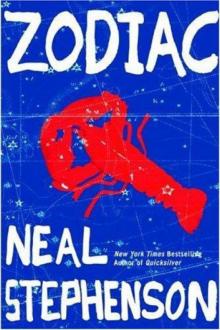 Zodiac: The Eco-Thriller
Zodiac: The Eco-Thriller The Mongoliad: Book One
The Mongoliad: Book One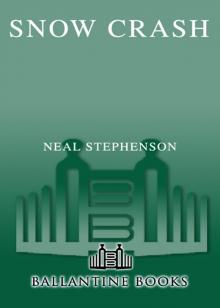 Snow Crash
Snow Crash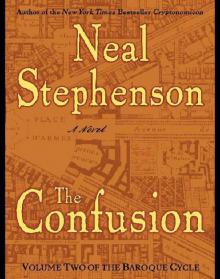 The Confusion: Volume Two of the Baroque Cycle
The Confusion: Volume Two of the Baroque Cycle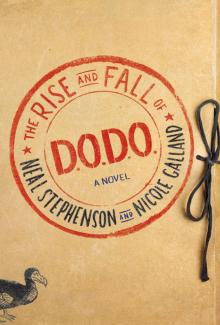 The Rise and Fall of D.O.D.O.
The Rise and Fall of D.O.D.O. The Diamond Age: Or, a Young Lady's Illustrated Primer
The Diamond Age: Or, a Young Lady's Illustrated Primer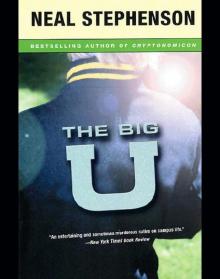 The Big U
The Big U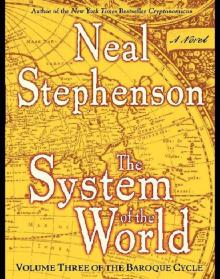 The System of the World: Volume Three of the Baroque Cycle
The System of the World: Volume Three of the Baroque Cycle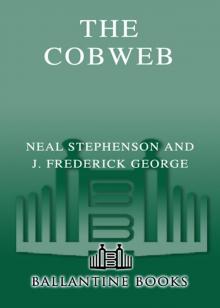 The Cobweb
The Cobweb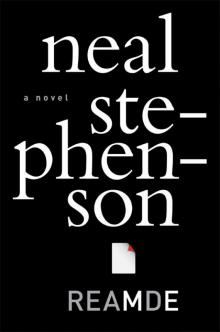 Reamde
Reamde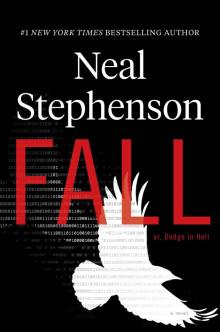 Fall; or, Dodge in Hell
Fall; or, Dodge in Hell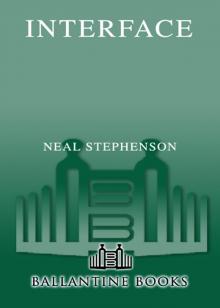 Interface
Interface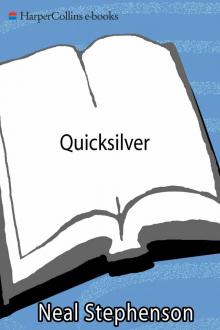 Quicksilver
Quicksilver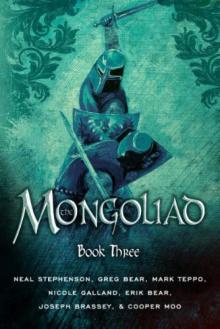 The Mongoliad: Book Three
The Mongoliad: Book Three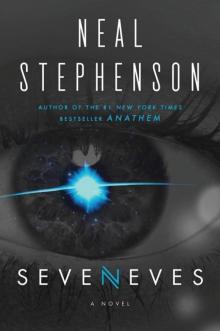 Seveneves
Seveneves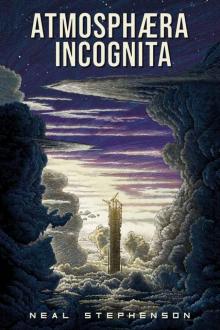 Atmosphæra Incognita
Atmosphæra Incognita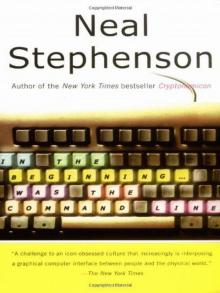 In the Beginning...Was the Command Line
In the Beginning...Was the Command Line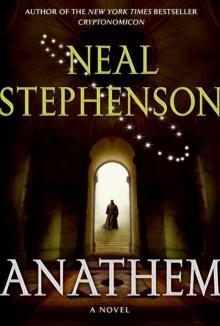 Anathem
Anathem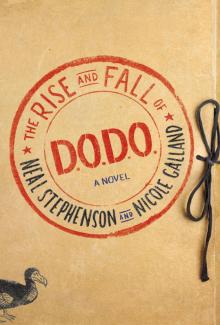 The Rise and Fall of D.O.D.O.: A Novel
The Rise and Fall of D.O.D.O.: A Novel The Mongoliad: Book Two
The Mongoliad: Book Two Diamond Age or a Young Lady's Illustrated Primer
Diamond Age or a Young Lady's Illustrated Primer THE System OF THE WORLD
THE System OF THE WORLD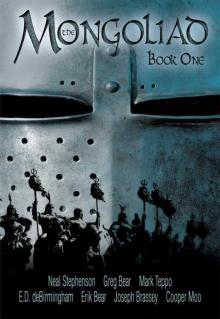 The Mongoliad: Book One tfs-1
The Mongoliad: Book One tfs-1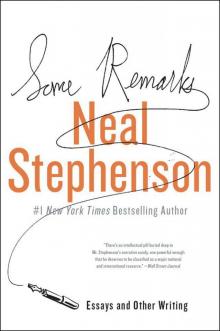 Some Remarks: Essays and Other Writing
Some Remarks: Essays and Other Writing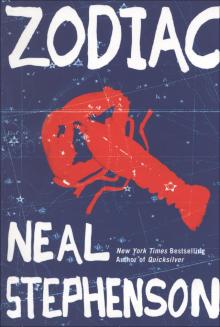 Zodiac
Zodiac Spew
Spew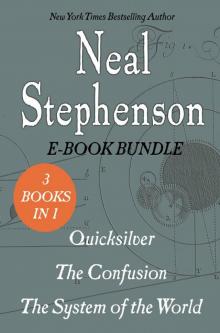 The Baroque Cycle: Quicksilver, the Confusion, and the System of the World
The Baroque Cycle: Quicksilver, the Confusion, and the System of the World The Diamond Age
The Diamond Age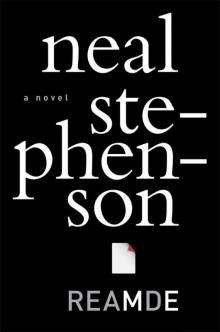 Reamde: A Novel
Reamde: A Novel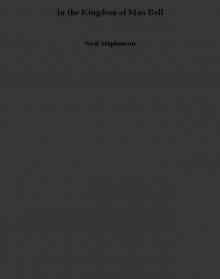 In the Kingdom of Mao Bell
In the Kingdom of Mao Bell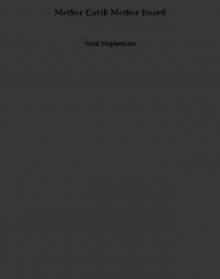 Mother Earth Mother Board
Mother Earth Mother Board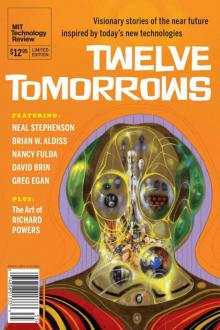 Twelve Tomorrows - Visionary stories of the near future inspired by today's technologies
Twelve Tomorrows - Visionary stories of the near future inspired by today's technologies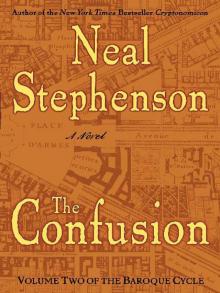 The Confusion
The Confusion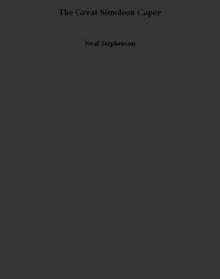 The Great Simoleon Caper
The Great Simoleon Caper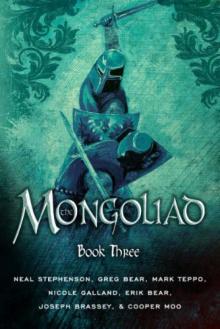 The Mongoliad: Book Three tfs-3
The Mongoliad: Book Three tfs-3